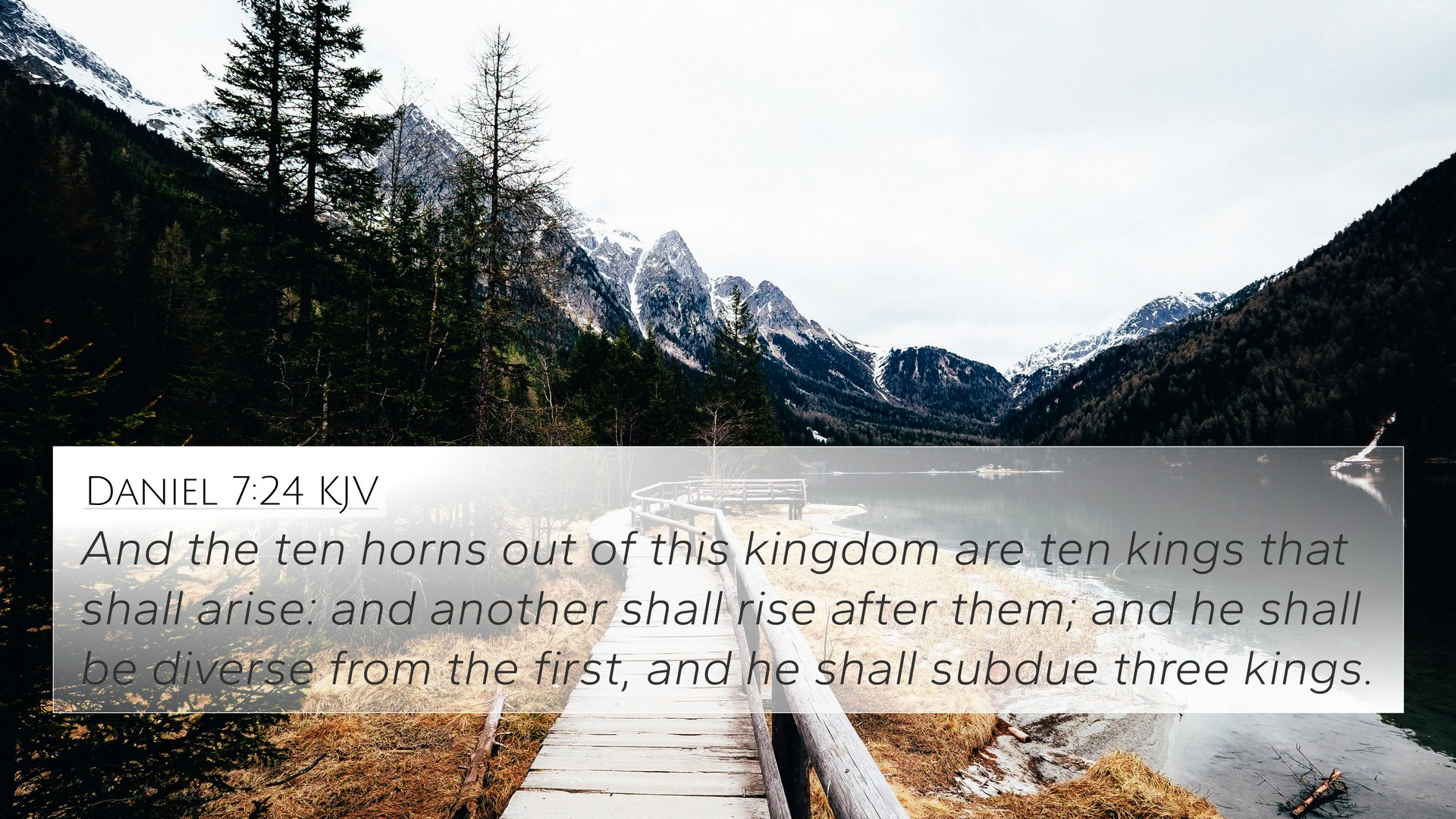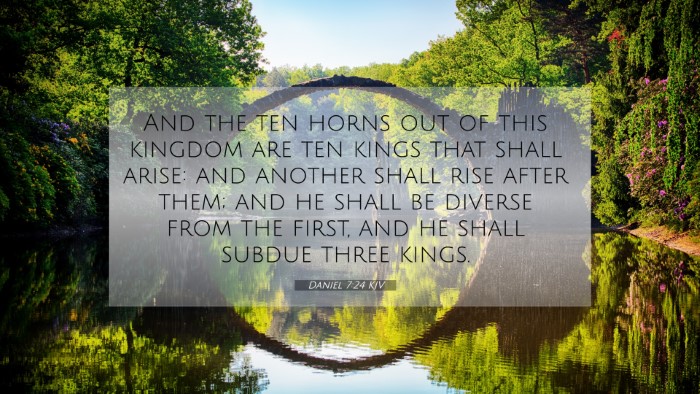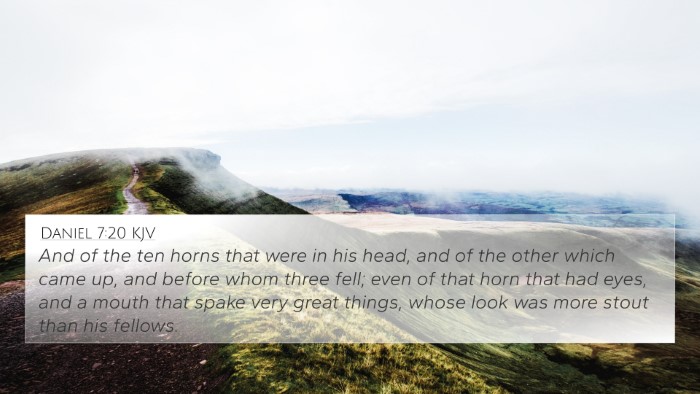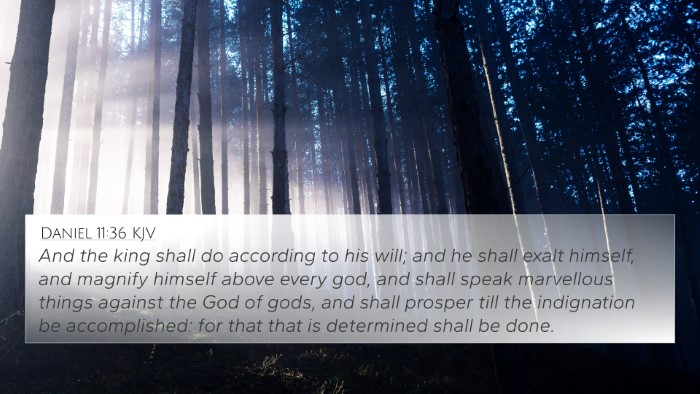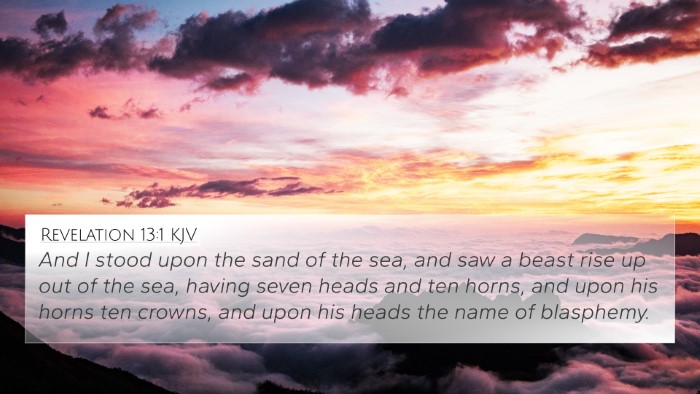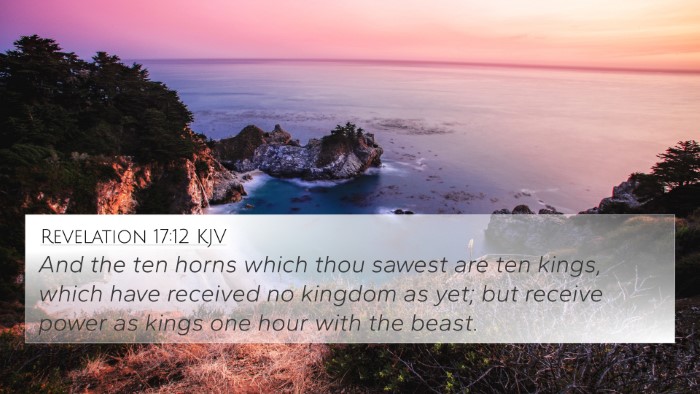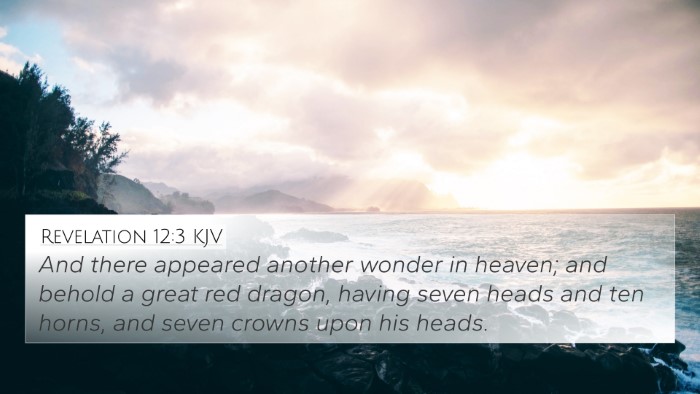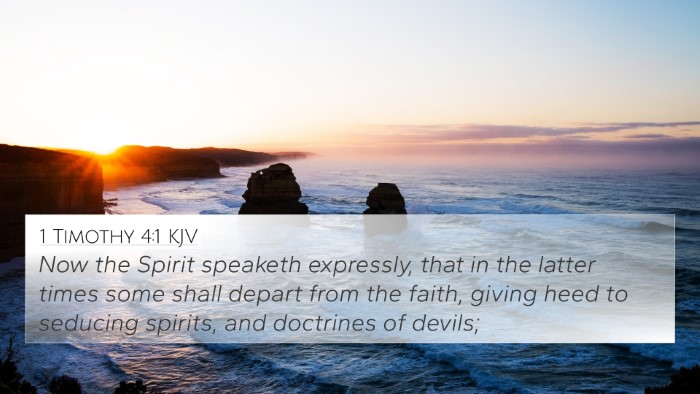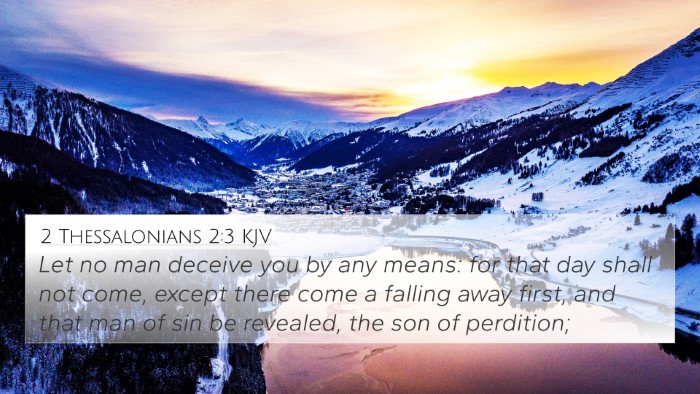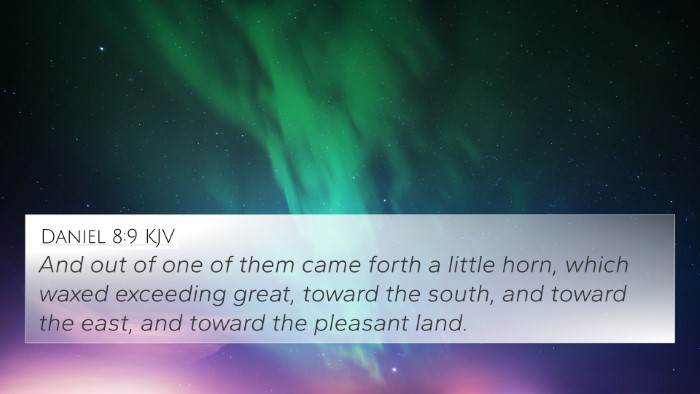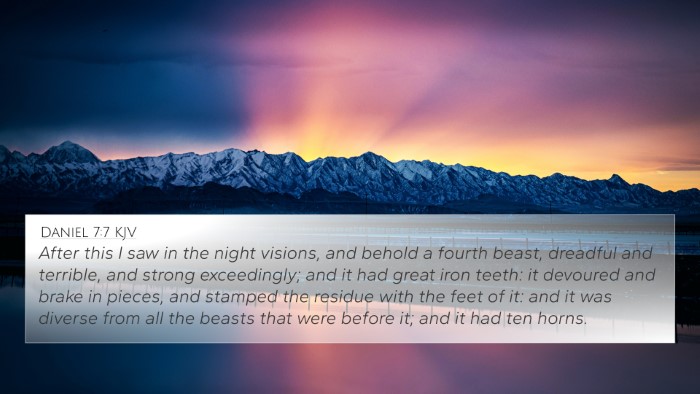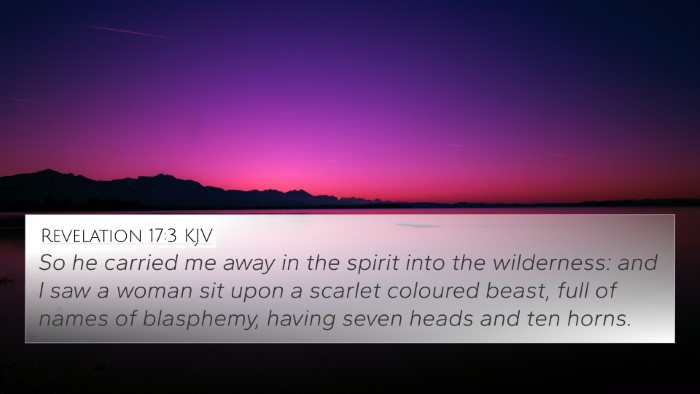Understanding Daniel 7:24
Verse Context: Daniel 7:24 highlights the emergence of a powerful kingdom, typically interpreted as representing various empires throughout biblical prophecy. This verse forms part of Daniel's vision of the four beasts, symbolizing different kingdoms that dominate over the earth.
Verse Text: "And the ten horns out of this kingdom are ten kings that shall arise: and another shall rise after them; and he shall be diverse from the first, and he shall subdue three kings."
Verse Interpretation and Insights
This verse indicates the rise of ten kings from the fourth beast, with one particular king (often interpreted as the Antichrist) rising to power and being distinct in his authority. The diverse nature implies that this leader will not only be politically but spiritually distinctive.
- Matthew Henry's Commentary: Matthew Henry discusses how the ten horns symbolize ten kings who will arise, often interpreted as a confederation of kingdoms or rulers. The eleventh horn, representing the Antichrist, will rise after them and will possess unique characteristics, subverting the three but emerging as a highly authoritative figure.
- Albert Barnes' Notes: Barnes points out the prophetic nature of this passage, linking it to the end times. He emphasizes how the text stresses the distinct nature of the final kingdom, suggesting significant changes under this rule and the oppression faced by the saints.
- Adam Clarke's Commentary: Clarke elaborates on the notion that the ten horns symbolize a period of division in governance, wherein the 'little horn' signifies a future ruler opposing Divine authority, indicative of the overarching theme of spiritual conflict throughout the ages.
Cross-References for Deeper Understanding
Understanding Daniel 7:24 can be enriched by cross-referencing other biblical texts. Here are ten important cross-references:
- Revelation 13:1-2: Connection to the beast with ten horns and its authority, suggesting a parallel to the powers described in Daniel.
- 2 Thessalonians 2:3-4: This passage discusses the man of sin, aligning with the 'little horn' and the theme of apostasy.
- Revelation 17:12: Here we see ten kings who receive power; this text directly correlates with Daniel's prophecy about the ten horns.
- Daniel 2:44: God’s everlasting kingdom, contrasting the temporal kingdoms represented by the beasts.
- Daniel 8:23-25: Discusses a fierce king arising, alluding to the characteristics of the 'little horn.'
- Matthew 24:24: Pertains to false messiahs and prophets that will arise, reflecting the deceptive nature of the Antichrist.
- Revelation 19:20: Describes the defeat of the false prophet, giving insight into the eventual triumph of God's kingdom.
- Isaiah 14:12-15: Covers the fall of the 'morning star,' which reminds of hubris and eventual judgment, linking to the theme of the 'little horn.'
- Daniel 11:36-39: Offers further insight into the character of future rulers, showing the traits of those opposed to God’s people.
- Luke 21:8: Indicates false prophets arising, reinforcing the warnings against deception during turbulent times.
Thematic Connections and Biblical Cross-Referencing
Understanding the themes surrounding Daniel 7:24 involves examining the connections between Biblical texts. The themes of power, authority, and divine judgment recur throughout scripture and form an intricate web of cross-references.
Exploring Scriptural Connections: This verse serves as a pivotal point for inter-Biblical dialogue, linking the Old Testament prophecies to their New Testament fulfillment, particularly in the apocalyptic literature.
Tools for Bible Cross-Referencing: For readers and students of the scripture, utilizing a Bible concordance or a cross-reference guide can enhance one’s study of these themes.
Conclusion
In studying Daniel 7:24, one gains insight into the eschatological framework of the scripture. The cross-references outlined not only illuminate the text but also provide fertile ground for comparative Bible verse analysis. By recognizing the connections between different scriptures, readers can develop a more profound understanding of biblical narratives and their interconnectedness.
